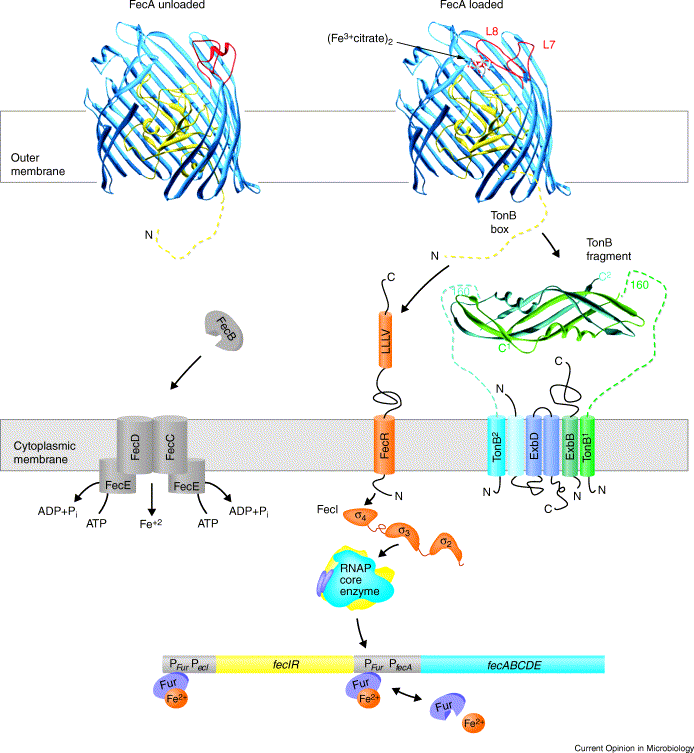Team:Paris/Transduction overview strategy
From 2009.igem.org
iGEM > Paris > Reception > Our strategy
C. Our Strategy
C. The Fec operon
Few ABC transporter such as FecABCD (iron transporter) are able to induce a response regardless of the tranlocation, due to the activity of FecA, moreover some mutant can also have a constitutive expression of FecABCD .
The plan would be to use FecA- mutant receiver and FecA+ mutant donor to transfert the constitutive FecA protein to the receiver. In this case the receiver will express the FecABCD operon without being induce by ferric citrate in the medium , and so we could place under the control of the Fec ABCD promoter, which is called pfec, the gene sequence encoding for the response. For the moment a response that would be easy to detect is the fluorescence of the RFP and the biobrick BBa-J61002 is the perfect candidate to test the system.
problems : the message is unidirectionnal and unrepeatable. It would just be a proof of principle that a vesicle-mediated controlled communication is possible.
C.x The trick TCS
We could ,with the help of Alfonso Jaramillo, design a synthetic PBP which could detect the substrate we choosed and activate a specific HK. The previous work done by Valencia in 2006 was to design vanilin-sensitive PBP and a network for a graduated response whereas we just need a proteic sensitive PBP and a binary type of response.
Even if the idea of creating a synthethic protein was very attractive, it would have been difficult to have concrete result in just 3 months.
 "
"
